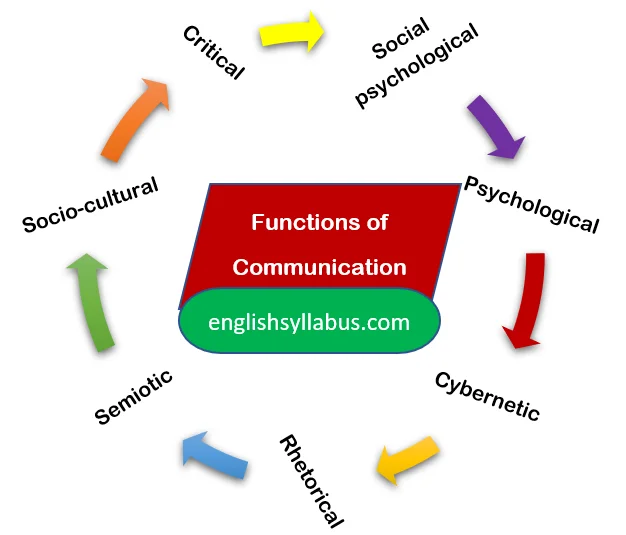
8 Functions of Communication
According to Crag, there are seven traditions of how communication functions.
Social psychological tradition
The first one is the social-psychological tradition. which means communication is an interpersonal interaction and influence. So, we all are born like social animals or social beings. So, we are to interact and communicate with one another.
psychological tradition
This has something to do with the behavior of people and how communication shapes and reshapes. That behavior and how it’s being influenced by the way we communicate and to whom we communicate. Communication is an influence on how we are as social beings and as psychological beings.
Cybernetic tradition
It is where communication is a system of information processing. This has something to do with your encoding or decoding because we need communication to serve our purpose and understand the world. And, the world that we live in has so many webs and networks like cyber networks. Many threads of relationships like we are on a huge web and we are all intertwined and interacting.
The cyber-world is the world of the internet full of information highways. We are on an information highway and we connect to almost everything and everyone globally. So, it’s information processing.
Rhetorical tradition
The rhetorical tradition is wherein communication functions as an artful public address. For example, whenever you hear speeches, campaigns, cost supports like politicians doing their speeches. That’s all about rhetorical comprises of the artful public address.
Semiotic Tradition
The semiotic tradition is one symbiotic with the same music. It is the study of signs and symbols. Here, the communication process is the process of sharing meaning through signs. It is a form of nonverbal communication but we also have images and colors as forms of communication. For example, traffic lights tell us about traffic rules. Imagine, if you wouldn’t understand these signs and symbols around you, then chaos would be there.
Socio-cultural tradition
Social and cultural communication is the creation and the enactment of social reality. It serves the purpose of co-creating meaning in the world we live in around us.
Critical tradition
The critical tradition means communication as a reflective challenge of unjust discourse. It is very challenging in a sense because you have to be serving a purpose or a cause. So, critical tradition does not embrace only what’s there of communication being served in a particular position, paper, or in a particular public address.
For example, you’re not just going to embrace it as a whole but you are going to be critical about it and analyze it. And you’re going to see whether there’s something that’s not fair, unjust or whether the discourse offends someone or some ethnicities. Whether they are being offensive, rude, or harsh and it might violate a particular right of people.
Communication functions also like a watchdog in terms of the communication that is happening.
Concluding functions of Communication
Communication is guided by culture and context, so we all know how important culture and context are in terms of communication. Because they help us define and appreciate and perceive communication better. And, they influence how we operate in the communication scenarios that we’re getting into. So, culture would help us to understand sensitivity more deeply.
For every person that we talk to better, the context would help us assess the communication scenario more. And how we should act towards that are the proper decorum, social norms, etc.
For example, the western culture and context versus the eastern culture and context are very much different. While everybody is endowed with the gift of the ability or the capacity to learn the language and produce language. We learn it differently, that’s because of the context we grow up interacting with different people.
